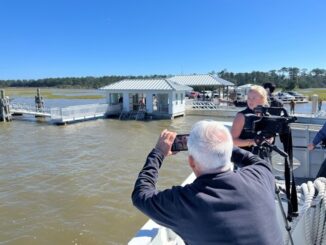CARTERSVILLE, Ga. — As William T. Sherman rode through the North Georgia countryside in the 1840s, he took note of one particular engineering feat.
The year was 1844, and the Western & Atlantic Railroad was under construction between Atlanta and Chattanooga, Tenn. As the railroad — known as the “Crookedest Railroad in the World” — made its way north, Allatoona Mountain stood in its path. Engineers cut a pass through the mountain. The result was a narrow, 360-foot-long ravine with walls as tall as 170 feet.
With a fort on top of the mountain, it would have been extremely difficult, if not impossible, for an Army to advance south along the railroad and take the pass. Twenty years later, during his March to Atlanta, Sherman knew that any fight at the pass would be a bloody one and opted to take a roundabout path from Kingston to Marietta in order to bypass the area.
“I … knew that the Allatoona Pass was very strong, would be hard to force, and resolved not even to attempt it, but to turn the position, by moving from Kingston to Marietta via Dallas,” Sherman wrote in his memoirs.
Ultimately, the Confederates abandoned Allatoona Pass as Sherman moved south, and it fell into Union control. By September 1864, Sherman captured the city of Atlanta.
But, after the fall of Atlanta, Confederate Gen. John Bell Hood began marching north toward Nashville, Tenn. Hoping to break Sherman’s supply line, Hood attacked at Union troops positioned at Allatoona Pass on Oct. 5, 1864. The battle that ensured is considered by many historians to be one of the Civil War’s bloodiest battles.
Before the battle began, Confederate Gen. Samuel G. French demanded that Union troops surrender “in order to avoid a needless effusion of blood.” French gave his Union counterpart, Gen. John M. Corse, five minutes to decide. Corse declined, saying: “We are prepared for the ‘needless effusion of blood’ whenever it is agreeable to you.”
French was right — it was a “needless effusion of blood,” and about 1,600 soldiers on both sides died in the battle. Though the Confederates experienced some initial success and overtook some of the outer entrenchments, they could not drive Union troops from Star Fort atop the mountain. With their ammunition running low and reports of Union reinforcements, the Confederates retreated; Union forces regained control of the pass.
Union forces lost 35 percent of their troops while the confederates lost 27 percent — numbers that rival the number of casualties suffered at the Battle of Gettysburg. Interestingly, Sherman first learned about the plan to attack Allatoona Pass by reading southern newspapers, which published a speech Confederate President Jefferson Davis gave in September 1864 in which he detailed his plans.
Today, the pass is as impressive as it was 160 years ago. The railroad has long been rerouted, but the sound of nearby passing freights still echoes in the pass. The remnants of Star Fort sit atop Allatoona Mountain. The site of this bloody battle now sits on the edge of Lake Allatoona and is part of Red Top Mountain State Park. In addition to the pass and the fort, there are a number of monuments dedicated to the soldiers who fought in the battle.




